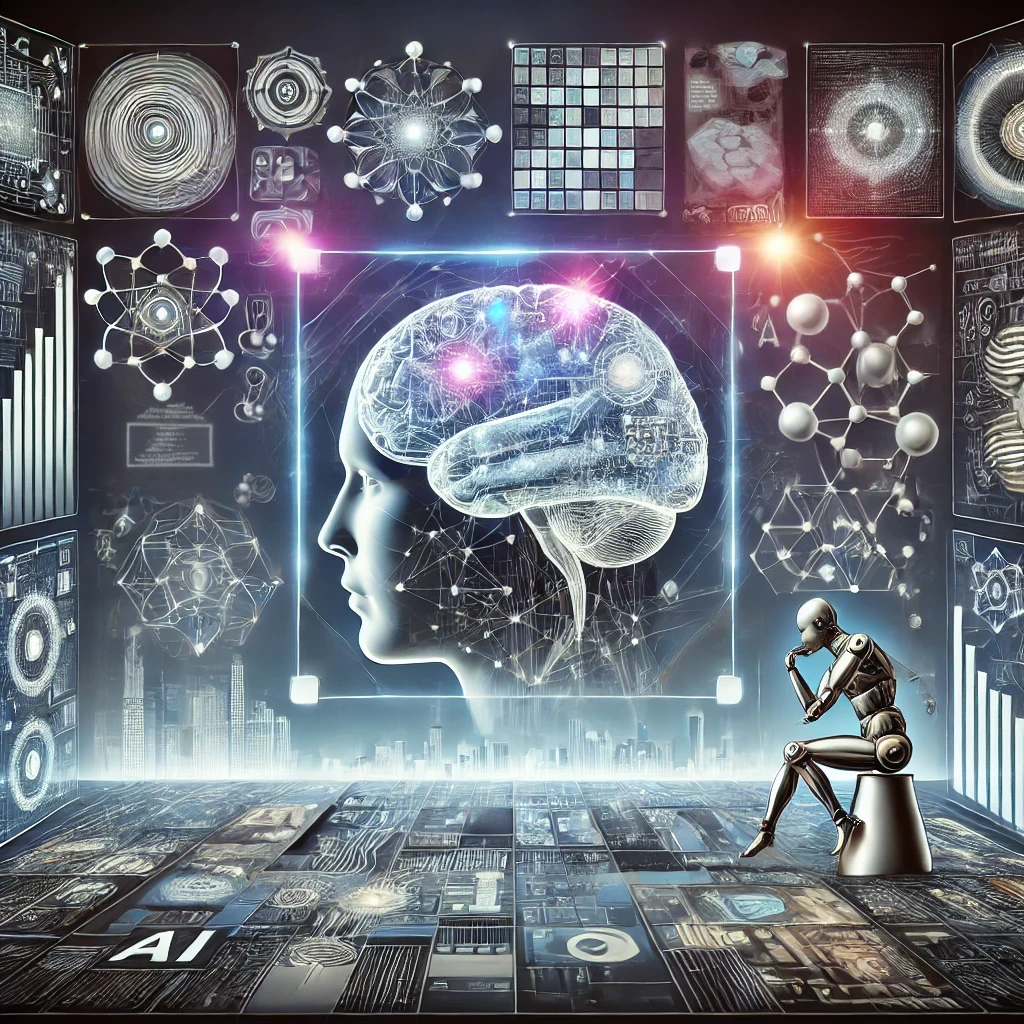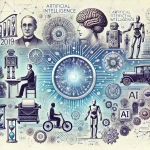Artificial intelligence (AI) has become a pivotal force in transforming how we interact with technology, enabling machines to perform tasks that typically require human intelligence. Among the most intriguing aspects of AI are cognitive technologies, which are designed to simulate human thinking processes. These technologies aim to replicate functions such as learning, reasoning, problem-solving, and decision-making. This article delves into how cognitive technologies and AI work together to mimic human cognition, their applications, and the potential challenges they pose.
Understanding Cognitive Technologies
Cognitive technologies refer to a subset of AI that focuses on emulating human thought processes. These technologies combine elements of machine learning, natural language processing (NLP), computer vision, and neural networks to enable machines to understand, learn, and respond to complex stimuli in ways that resemble human cognition. The goal of cognitive technologies is not just to perform tasks but to do so in a manner that mirrors human thought patterns, making interactions with AI systems more natural and intuitive.
The Role of Machine Learning in Cognitive Technologies
Machine learning is at the core of cognitive technologies. It enables AI systems to learn from data, identify patterns, and make predictions without being explicitly programmed for every possible scenario. Machine learning models are trained on large datasets, allowing them to improve their performance over time as they are exposed to more information.
There are several types of machine learning that contribute to cognitive technologies, including supervised learning, unsupervised learning, and reinforcement learning. Supervised learning involves training models on labeled data, where the algorithm learns to associate input data with the correct output. Unsupervised learning, on the other hand, involves analyzing data without predefined labels, allowing the model to identify hidden patterns or groupings. Reinforcement learning is a type of machine learning where an AI agent learns to make decisions by interacting with its environment and receiving feedback in the form of rewards or penalties.
Neural Networks and Deep Learning
Neural networks, particularly deep learning models, are essential components of cognitive technologies. Inspired by the structure of the human brain, neural networks consist of layers of interconnected nodes (neurons) that process and transmit information. Each layer of a neural network extracts increasingly complex features from the input data, allowing the model to make sophisticated predictions or decisions.
Deep learning, a subset of machine learning, utilizes neural networks with many layers (hence the term “deep”) to model complex patterns in data. These models are particularly effective in tasks such as image and speech recognition, where they can identify intricate details and subtle differences that might be missed by simpler algorithms. Deep learning models are integral to the functioning of cognitive technologies, enabling AI systems to process large amounts of unstructured data and derive meaningful insights.
Natural Language Processing (NLP)
Natural language processing (NLP) is a branch of AI that focuses on enabling machines to understand, interpret, and generate human language. NLP is a critical component of cognitive technologies, as it allows AI systems to engage in conversations, analyze text, and even create written content. Through NLP, cognitive technologies can process and respond to spoken or written language in ways that mimic human communication.
One of the key challenges in NLP is understanding context and disambiguating meaning in language, which is often complex and nuanced. Advanced NLP models, such as OpenAI’s GPT series, use deep learning techniques to capture the context and generate coherent and contextually relevant text. These models are capable of performing a wide range of language-related tasks, including translation, summarization, sentiment analysis, and dialogue generation.
Reasoning and Decision-Making
Reasoning and decision-making are fundamental aspects of human cognition, and cognitive technologies strive to replicate these processes in AI systems. Logic-based AI, also known as symbolic AI, involves the use of rules and symbolic representations to simulate reasoning. These systems can perform tasks such as solving puzzles, planning, and making inferences based on logical rules.
However, purely rule-based systems have limitations, particularly when dealing with uncertainty or incomplete information. To address these challenges, cognitive technologies often combine logic-based reasoning with probabilistic models, which allow AI systems to make decisions based on likelihoods and probabilities. This hybrid approach enables AI to navigate complex environments where deterministic rules may not suffice.
Computer Vision and Perception
Computer vision is another crucial element of cognitive technologies, enabling AI systems to interpret and understand visual information from the world around them. Through computer vision, AI can recognize objects, detect faces, analyze movements, and even understand scenes in real-time. This capability is essential for applications such as autonomous vehicles, surveillance systems, and robotics.
Computer vision relies on deep learning models, particularly convolutional neural networks (CNNs), to process and analyze visual data. These models are trained on large datasets of images or videos, allowing them to learn to recognize patterns and make accurate predictions. As AI continues to advance, computer vision systems are becoming more sophisticated, capable of performing tasks that require a deep understanding of visual context and spatial relationships.
Applications of Cognitive Technologies
Cognitive technologies have a wide range of applications across various industries, transforming the way we live and work. Some of the key areas where these technologies are making an impact include:
Healthcare
In healthcare, cognitive technologies are being used to assist in diagnosis, treatment planning, and patient care. AI systems can analyze medical records, imaging data, and genetic information to identify potential health risks and recommend personalized treatment options. Additionally, NLP-based systems can assist doctors by transcribing and analyzing patient interactions, streamlining administrative tasks and improving the quality of care.
Finance
In the financial sector, cognitive technologies are being deployed to detect fraud, assess credit risk, and optimize investment strategies. AI-driven systems can analyze large volumes of financial data to identify patterns and anomalies, enabling faster and more accurate decision-making. These technologies also support automated trading systems, where AI algorithms execute trades based on real-time market data.
Customer Service
Cognitive technologies are revolutionizing customer service by enabling the development of intelligent chatbots and virtual assistants. These AI-powered tools can engage in natural language conversations with customers, providing instant support and resolving common issues. By leveraging NLP and machine learning, these systems can learn from each interaction, improving their ability to assist customers over time.
Education
In education, cognitive technologies are being used to create personalized learning experiences for students. AI-driven systems can assess a student’s strengths and weaknesses, adapt the curriculum to their needs, and provide real-time feedback. This personalized approach to education enhances student engagement and improves learning outcomes.
Challenges and Ethical Considerations
While cognitive technologies offer numerous benefits, they also present challenges and ethical considerations. One of the primary concerns is the potential for bias in AI systems. Because AI models learn from data, they can inadvertently inherit biases present in the training data, leading to unfair or discriminatory outcomes. Addressing bias in cognitive technologies requires careful data curation, transparency in model development, and ongoing monitoring to ensure fairness.
Another challenge is the interpretability of cognitive technologies. As AI systems become more complex, it becomes increasingly difficult to understand how they arrive at their decisions. This “black box” nature of AI can be problematic, particularly in high-stakes applications such as healthcare and finance. Efforts to improve the interpretability and explainability of AI models are critical to building trust and ensuring responsible use.
Conclusion
Cognitive technologies represent a significant advancement in AI, enabling machines to mimic human thinking and perform tasks that require intelligence and reasoning. Through machine learning, deep learning, NLP, and computer vision, these technologies are transforming industries and reshaping the way we interact with technology. However, as cognitive technologies continue to evolve, it is essential to address the challenges and ethical considerations they pose, ensuring that AI is developed and deployed in a manner that aligns with human values and societal needs.



Cognitive AI is making machines think more like humans—let’s just hope they don’t start asking for coffee breaks while they handle everything !
Lmao yeah thats true… 😂👌
Amazing but chilling! 🧠🤖 Let’s not forget ethics & values—super important! ⚠️
Aint nobody forgettin tho! Look how many restrictions dey puttin on neural nets… 🙄
ai that thinks like us? its awesome 😎😎😎
lol AI with cognitive so freakin awesome omg 👍👍